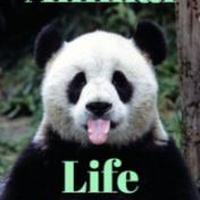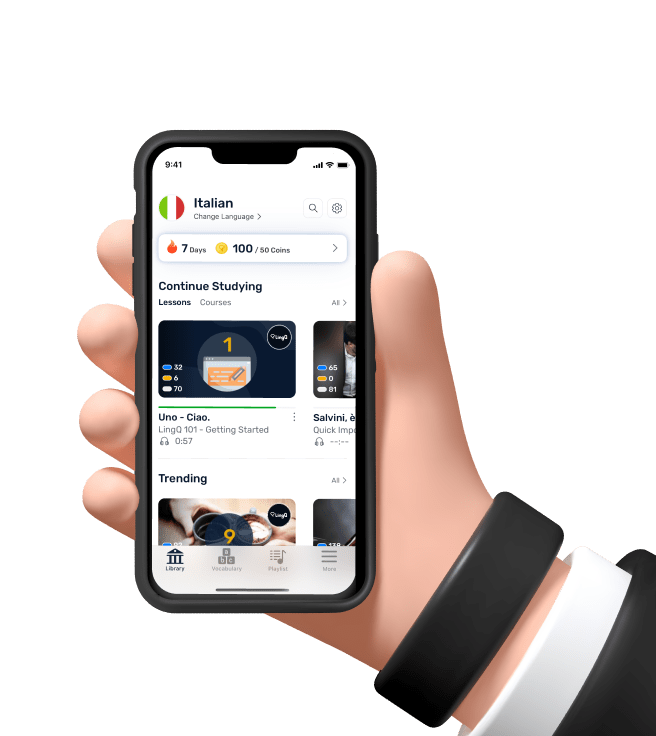Animal Life Cycles (2)
Breeding
Most amphibians go to wet places like ponds, lakes, or rivers to breed, because their eggs and larvae live in water. Many go back to the same place every year, and some go back to the pond or stream where they were born. Male frogs croak and shout to tell the females that they are ready to breed. They push their throats out so that their calls are louder. When the female has chosen a mate, she lays her eggs in the water, and the male covers them with sperm.
CHAPTER SIX
Reptiles
Reptiles are cold-blooded, and their skin is dry and covered with special scales. Lizards, snakes, crocodiles, alligators, and turtles are all reptiles. Some live on land and some live in water.
Eggs
Most reptiles hatch from eggs, but a few are born as living animals. Females lay their eggs in a warm, wet place. They usually lay a lot of eggs, but many eggs are eaten by predators. Most reptiles lay their eggs and then they leave them, but pythons put their body around their eggs to keep them warm. Alligators make a big nest from mud and leaves. They lay their eggs and stay near the nest. They don't eat for weeks when they are keeping their eggs safe.
Growing Up
Crocodiles and alligators are very good parents after their eggs hatch. The female Nile crocodile is very careful - she puts her babies inside her mouth to carry them to water. She stays near them to keep them safe for up to two months.
When snakes and lizards grow, they get too big for their skin. The old skin comes off and there's a new one underneath. This is called sloughing. Most snakes lose their old skin three or four times every year.
Breeding
When reptiles are ready to breed, they have to find a mate. Male crocodiles lift their head up and make a loud sound. They also blow bubbles in the water so that females will see and hear them. Snakes find their mate by smell. The females leave a special smell that the male follows. Other male reptiles, like monitor lizards, fight each other for a mate. The females choose the winner of the fight because he's the strongest.
Some whiptail lizards can produce young without mating! The eggs are not fertilized, but they still hatch.
Keeping Safe
Reptiles are in danger from many predators, and they have lots of ways of keeping safe. If a predator catches a lizard by its tail, the lizard can break its tail off and escape. It then grows a new tail. The stinkpot turtle makes a horrible smell from its legs to make predators go away. Many reptiles also use camouflage to keep safe. Some chameleons can change color so that predators do not see them, and the leaf-tailed gecko can hide easily because its body looks like a leaf.
CHAPTER SEVEN
Birds
There are about 9,000 different species of bird, and they all lay eggs. Baby birds called chicks come from eggs. Birds are the only animals that have feathers. All birds have wings and most birds can fly.
Courtship
Courtship is when male birds try to find female birds that they can mate with. Male birds do many different things to find a mate. Some males show females their colors. The male frigate bird pushes his red throat out like a balloon. The blue-footed booby shows his big blue feet.
Songbirds sing for their females, and the bower bird builds a special place with twigs and puts bright colored things in it so that it looks pretty.
Nests
Birds work very hard to build nests - special homes where they can keep their eggs and chicks safe and warm. They find grass, mud, and twigs, and they push them together. Many birds build nests in high places like trees and cliffs. Others build them on the ground. These birds are usually brown and speckled, so they are well camouflaged.
Eggs
The female bird lays her eggs in the nest. Then the female or the male sits on the eggs to keep them warm. When the chick is ready to hatch, it breaks the shell with a special 'tooth' on its beak.
Cuckoos lay their eggs in other birds' nests. When the baby cuckoo hatches, it pushes the other eggs or chicks out of the nest so that it can have more food. It often grows much, much bigger than the adult bird that is feeding it!
Ostrich eggs are the biggest bird eggs, and they can weight about 2 kilograms. If you stand on one, it will not break!
Chicks
Many chicks have no feathers, and they can't see or move when they hatch, but some can run, swim, and find food. Birds feed their chicks and keep them safe until they can care for themselves. Birds often have to fly to and from the nest hundreds of times a day to bring enough food for their chicks.
Growing Up
Some small birds can fly just two weeks after they hatch, but bigger birds take longer. Chicks watch their parents and learn to fly, feed, sing, and keep safe. Some baby birds do not become adults for months or even years.
Many birds that migrate every year have to make long, dangerous journeys when they are still very young. These birds fly to warmer places for winter and come back to their breeding places for summer.
CHAPTER EIGHT
Mammals
All mammals have fur or hair and they produce milk to feed their babies. Giraffes, bears, kangaroos, elephants, and people are all mammals.
Breeding
It's usually the female mammals who choose a mate, so the males want the females to look at them. Leopards make marks on trees with their claws so that the females will know they are there. Other animals make special smells.
Males often fight with each other to win a mate. Male giraffes fight with their head and neck to show which animal is the strongest.
Having Babies
Most mammals do not lay eggs. The babies grow inside the mother's body, and they get food and oxygen from a special part of the body called the placenta. This is called gestation.
The gestation time for shrews is only two weeks, but for African elephants it's 22 months!
When mammals are ready to have their babies, many look for safe, quiet places. Polar bears dig special dens in the snow so that their babies will be warm and safe.
Baby Mammals
Some baby mammals grow a lot inside their mother's body, and they can stand up as soon as they are born. Other baby mammals can't see or move when they are born. Mammals produce milk for their babies, and this is the only food or drink that they need at first.
Marsupials
Marsupials are animals like kangaroos and koalas. Baby marsupials only grow for a short time inside their mother's body. After they are born, they continue to grow on the outside of their mother's body, usually in a pouch. Baby kangaroos are only 5 centimeters long when they are born. They climb into their mother's pouch, where they stay for up to a year.
Growing Up
Mammals are different from many other types of animal because they feed and care for their babies. Anteaters carry their babies on their back for the first year, and elephants stay near their mother until they are ten years old. Baby mammals learn from their parents, and they learn by playing, too.
Life Cycles
Life is very dangerous for a lot of animals. Many are killed by predators. Also, people hunt them and damage their habitats - the places where they live.
Many animals die before they become adults, but if they grow up, then they can produce young. This is all part of their life cycle. Because of this, there will always be millions of species of animal on Earth, if we care for them and their habitats.
- THE END -

